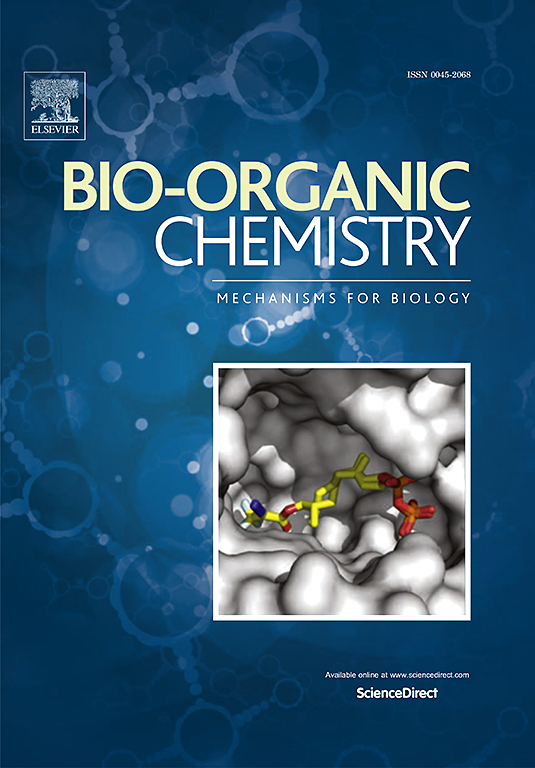Amoebicidal thymol analogues against brain-eating amoeba, Naegleria fowleri
IF 4.5
2区 医学
Q1 BIOCHEMISTRY & MOLECULAR BIOLOGY
引用次数: 0
Abstract
Naegleria fowleri, known as the brain-eating amoeba, is the pathogen parasite that causes primary amoebic meningoencephalitis. None of the currently available therapies are fully effective, mainly due to the inefficacy of pharmacotherapy. In this regard, natural products and related compounds represent a promising strategy for amoebicidal drug discovery. Herein, a series of eight monoterpene phenol derivatives of thymol bearing ester, carbonate, or carbamate moieties were prepared, and screened as potential amoebicidal agents on N. fowleri. The cytotoxicity of these compounds on murine macrophages cell line J774 was also evaluated to assess their selectivity. Compounds 3, 4, 7 and 8 showed significant activity against the N. fowleri trophozoite. Moreover, 4-nitrophenyl thymyl carbonate 8 displayed the highest potency, showing IC50 values of 22.87 and 25.16 μM against N. fowleri trophozoite and cyst stages, respectively, coupled with low cytotoxicity on a mammal cell line. Furthermore, mechanism of action studies revealed that derivative 8 triggered programmed cell death via cytosolic calcium accumulation, mitochondrial alteration, membrane damage, chromatin condensation, and ROS accumulation. In addition, the in-silico ADME analysis indicated that derivative 8 exhibits exceptional drug-likeness meeting all the pharmacokinetic criteria. These results highlight derivative 8 as a promising amoebicidal agent to develop new drugs for the treatment of Naegleria infections.

求助全文
约1分钟内获得全文
求助全文
来源期刊

Bioorganic Chemistry
生物-生化与分子生物学
CiteScore
9.70
自引率
3.90%
发文量
679
审稿时长
31 days
期刊介绍:
Bioorganic Chemistry publishes research that addresses biological questions at the molecular level, using organic chemistry and principles of physical organic chemistry. The scope of the journal covers a range of topics at the organic chemistry-biology interface, including: enzyme catalysis, biotransformation and enzyme inhibition; nucleic acids chemistry; medicinal chemistry; natural product chemistry, natural product synthesis and natural product biosynthesis; antimicrobial agents; lipid and peptide chemistry; biophysical chemistry; biological probes; bio-orthogonal chemistry and biomimetic chemistry.
For manuscripts dealing with synthetic bioactive compounds, the Journal requires that the molecular target of the compounds described must be known, and must be demonstrated experimentally in the manuscript. For studies involving natural products, if the molecular target is unknown, some data beyond simple cell-based toxicity studies to provide insight into the mechanism of action is required. Studies supported by molecular docking are welcome, but must be supported by experimental data. The Journal does not consider manuscripts that are purely theoretical or computational in nature.
The Journal publishes regular articles, short communications and reviews. Reviews are normally invited by Editors or Editorial Board members. Authors of unsolicited reviews should first contact an Editor or Editorial Board member to determine whether the proposed article is within the scope of the Journal.
 求助内容:
求助内容: 应助结果提醒方式:
应助结果提醒方式:


